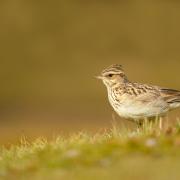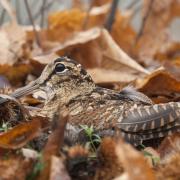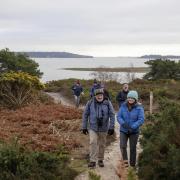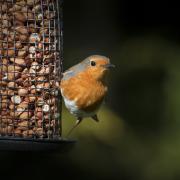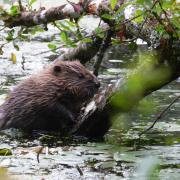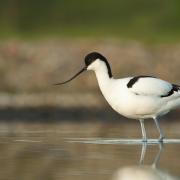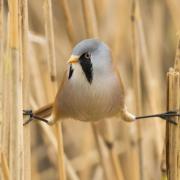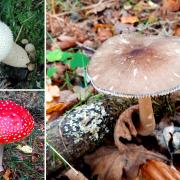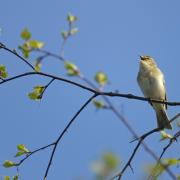Every May the ancient woodlands of Dorset are covered in a carpet of bluebells. Photographer Colin Varndell explores the fragrant domain of the bluebell and reveals some of the best spots to enjoy this seasonal splash of azure amongst the trees.
Plantlife in deciduous woodland is a continuous cycle of renewal and decay, with the timing of both dictated by seasonal weather conditions. In early spring, woodland flowers emerge on the forest floor, drawing on underground food reserves as they race to swell their buds and burst into flower. With the advance of spring a flush of green spreads throughout the wood as tender new leaves open. At this time of year the herb layer of the woodland floor is made up of, amongst others, wood anemone, primrose, campion and bluebells. The bluebell woods of Britain and Ireland are said to boast some of the most spectacular displays of spring flowers in Europe and one can never fail to be impressed and stunned by the sheer beauty of such sights. Indeed, 50% of the world’s bluebells occur in Britain and some of the finest examples of mature bluebell woods are here in Dorset. It is therefore absolutely right that we should feel a deep sense of pride and even a kind of parental responsibility to protect this most cherished wildflower and its habitat.
Bluebells form dense carpets of blue where they bloom, just as the trees are coming into leaf. The fragrant nodding violet-blue (rarely white or pink) flowers have creamy white anthers. The narrow dark green leaves are evident long before and even well after flowering. The lime green of beech leaves provides the perfect backdrop for the cobalt spread of flora below. The peak of the bluebell season in Dorset is usually around the last week of April to the first week in May. Winter weather can affect the timing though and a very cold spell earlier in the year can delay the flowering. In spring, there is virtually no lower storey foliage to interfere with the view and as the sun filters through the trees a magical image is created. However, this intense profusion of azure blue does not last long, and within a few days of its peak the colour fades to a paler shade.
The reason we have such a rich explosion of bluebells and other woodland flowers at this time of year is simply due to availability of light. In spring, buds break and the woodland canopy fills with new leaves. Trees constantly compete with each other for light, reaching out with their branches to fill every available gap in the canopy. Once all the leaves have unfurled, every last space in the canopy is smothered with foliage, and sunlight can no longer reach the woodland floor. Spring flowers, like the bluebell, therefore rush for a quick flowering season in order to set seed before this leaf development is complete.
There is no doubt that bluebells do not like dry conditions. After photographing them year after year for over three decades in Dorset, it has been apparent that the richest displays of misty blue haze occur in greatest profusion after relatively wet winters.
However, our native bluebell (endymion non-scriptus) is under threat, and in recent years concern has been growing regarding the increasing risk of cross-breeding with the cultivated bluebell or so-called ‘Spanish bluebell’ (endymion hispanicus). Such hybridisation can alter a plant species’ genetic makeup and may result in a reduced ability to survive. This vigorous invader has become popular in gardens around Dorset, and as long as it is allowed to thrive the threat to our own native bluebell increases.
But for now, the time has arrived for the English bluebell to take centre stage as families go on their annual bluebell pilgrimage to view it in all its fragrant splendour. There are so many magnificent bluebell woods in Dorset that to describe them all would take a dedicated book in itself. However, some of the lush stands of bluebells worth visiting can be seen at Powerstock Common, Lewesdon Hill, Fifehead Wood, The Stubbs (near Milton Abbas), Abbot Street Copse and Woolland Hill.
Duncliffe Wood near Shaftesbury boasts one of the largest areas of native woodland in Dorset, covering an area of 213 acres. The bluebells here thickly clothe the steep slopes, and with open public access the wood attracts many visitors in early May. In contrast, Mintern Seat Coppice, a small native woodland near Batcombe, is privately owned. However, in the past, the owners have given permission for limited access to view the bluebells, though much of this magnificent display can be seen from the roadside.
Delcombe Wood near Milton Abbas is mostly private with only limited public access, but the drive (or walk) along the road from Bullbarrow to Milton can be glorious, especially on a dull or wet day in early May, with deep-blue swaythes of bluebells interspersed with drifts of white ramsons (wild garlic).
Although bluebells occur in woods and copses throughout Dorset, it is noticeable when speaking with people around the county that most have their favourite bluebell wood and, more often than not, on their own doorstep. As a nature photographer with a passion for wild flowers, I have always thought that bluebell lovers in Dorset are roughly divided into two categories – those who have never visited Hooke Park and those whose favourite bluebell wood is Hooke. In spring, this beech wood is smothered in a knee-deep tide of bluebells, and with trees all of the same age, it creates an eye-catching, repetitive effect on an attractive undulating site. So it has been with great pride that I have led many photographic groups into Hooke Park over the years, but none have been more stridently enthusiastic than a group from Boston, US. Each time I took them to yet another impressive Dorset view they would remark on how wonderful our county was, reminding me each time (actually I did not need reminding) just how lucky I was to live in this part of the world.
I reserved Hooke Park for the end; it was the first week in May and the bluebells were at their best. We walked into the wood in early evening, just as an ethereal sea mist rolled in and the distant trees faded into the thick haze, creating an enchanting atmosphere. The Americans stopped in their tracks, their voices silent but their gaping mouths spoke volumes.







